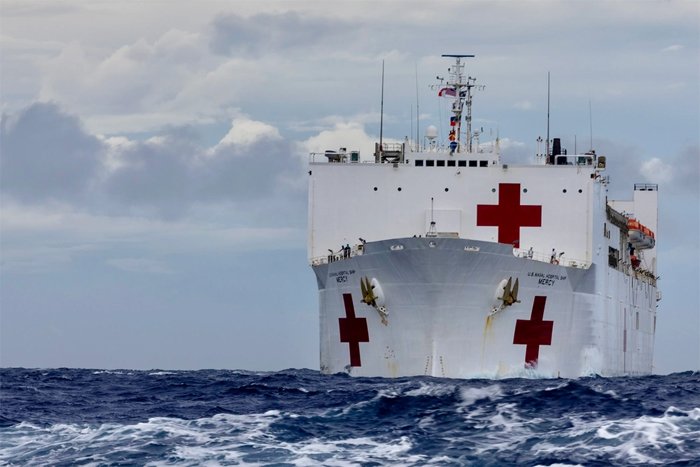On October 30, the United States Pacific Partnership has arrived in Republic of the Marshall Islands (RMI) to commence the largest annual multinational humanitarian assistance and disaster relief preparedness mission conducted in the Indo-Pacific region.
The arrival of Military Sealift Command hospital ship USNS Mercy (T-AH 19) to Majuro, RMI, signifies the launch of the Pacific Partnership 24-1 mission, which will enable American and Marshallese participants to work together to enhance disaster response capabilities and foster new and enduring friendships.
“The Pacific Partnership 24-1 mission is one example of our longstanding commitment to the Indo-Pacific region, while further strengthening enduring relationships and cooperation with partner-nations such as the RMI,” said Rear Adm. Mark A. Melson, Commander, Task Force 73 and Executive Agent for this year’s mission. “The RMI is a long and respected partner with deep ties to the U.S. Navy and contributes to security and stability in the region.”
At the invitation of host nations, Pacific Partnership’s mission partners conduct tailored humanitarian civil action preparedness activities in areas such as engineering, disaster response, public health, and host nation outreach events.
This year marks the fifth time Pacific Partnership has been to RMI. This stop will provide tailored medical care focusing on surgeries, training for first responders, clinical care, subject-matter exchanges, and community education at Majuro, Ebeye and Aur Atolls.
Engineering projects will include school renovations at Long Island Elementary and Rita Elementary Schools, while experts in the field will share knowledge exchanges through exercises covering humanitarian and disaster relief topics.
Additionally, the U.S. Pacific Fleet Band will perform alongside Australian military musicians in a variety of community engagements.
“Pacific Partnership creates lasting bonds of friendships and trust between the United States, partner nations, and host nations,” said U.S. Navy Captain Brian Quin PP 24-1 Mission Commander. “I am excited to continue the tradition and honored to be a part of such an important mission”.
USNS Mercy will serve as the mission platform and a combined team of civilian crew members and uniformed military members make up the crew of Mercy, which can staff up to 1,200 medical personnel.
The ship has 12 fully equipped operating rooms, 1,000 hospital beds, radiological services, a medical laboratory, a pharmacy, optometry facilities, a CT scanner and an oxygen-producing plant. In addition to activities aboard the hospital ship, Pacific Partnership medical providers will work shoulder to shoulder with colleagues at the Majuro Hospital and Laura Clinic, ensuring that information exchange results in sustainable medical practices once USNS Mercy leaves the RMI.
Pacific Partnership focuses on multiple effort to help build resilience and host nation capacity to support essential humanitarian services.
As an added feature, RMI will partner with the Mercy’s medical team and deploy the country’s own hospital ship, Liwatoon Mour, to deliver health care services to outer atolls. They will take aboard and integrate Mercy medical staff to Aur Atoll in an effort to eradicate tuberculosis, a first-time collaboration for the Pacific Partnership mission.
This year’s mission will also feature nearly 1,500 personnel from allies and partner nations including Australia, Chile, Japan, Germany, and New Zealand.
Born out of the devastation brought by the December 2004 tsunami that swept through parts of South and Southeast Asia, Pacific Partnership began as a military-led humanitarian response to one of the world’s most catastrophic natural disasters. Building on the success and goodwill of this operation, the U.S. helped spearhead the inaugural Pacific Partnership mission in 2006. This mission leveraged partner militaries and the proficiencies of Non-Governmental Organizations to expand disaster relief capacity in Bangladesh, Indonesia, the Philippines, and Timor-Leste.
Pacific Partnership, now in its 19th iteration, is the largest annual multinational humanitarian assistance and disaster relief preparedness mission conducted in the Indo-Pacific. Each year the mission team works collectively with host and partner nations to enhance regional interoperability and disaster response capabilities, increase security and stability in the region, and foster new and enduring friendships in the Indo-Pacific.

